___________________________________
Bahman Badipour, Chief Technical Rules Branch, Office of Engineering and Technology of the Federal Communications Commission, Washington DC, USA
Talk Title: Spectrum for sensors in the age of automation and IoT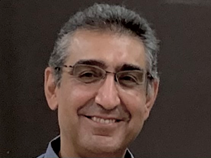
Abstract: In the era of self-driving cars, automation and A.I., it is expected that more and more applications may rely on the ability to sense their surrounding environment in support of their function. This presentation will discuss the current spectrum allocated to field sensors and talk about some of the newest sensor applications in different bands, their spectrum needs, and their regulatory status.
Biography: Bahman Badipour is the Chief of Technical Rules Branch at the Office of Engineering and Technology of the Federal Communications Commission. He has been the technical lead on some of the most recent FCC Report and Order including Spectrum Frontier (5G), Spectrum Horizon, C-Band, and 6 GHz. Prior to joining the FCC, Bahman was an RF Engineering consultant for a number of leading telecommunication companies. Between 1992 to 1999 he was R&D engineer in the Electromagnetic Theory and Techniques Branch of the Naval Surface Warfare Center, Carderock Division. He holds a Ph.D. degree in Electro-physics from The George Washington University.
___________________________________
Eric Bryerton, Engineering Fellow at Virginia Diodes, Inc. Charlottesville, Virginia, USA
 Talk Title: Millimeter-Wave Test and Measurement from 2000-2020
Talk Title: Millimeter-Wave Test and Measurement from 2000-2020
Abstract: The ability to make accurate and repeatable measurements, rapidly and over wide bandwidths, is essential to more widespread use of the millimeter-wave spectrum. This talk gives an overview of the last two decades of advances in this area. We trace the progression from development and construction of the extremely sensitive superconducting heterodyne receivers in the Atacama Large Millimeter Array (ALMA) to the commercial availability of general frequency extension modules for common microwave test equipment up to 1 THz and beyond. We also describe emerging moderate-volume applications for submillimeter-wave and THz sources and receivers, including small-satellite constellations for atmospheric modeling and weather forecasting.
Biography: Eric W. Bryerton (S’95–M’99–SM’06) received the B.S.E.E. degree from the University of Illinois in Urbana-Champaign, Champaign, IL, USA, and the Ph.D. degree in electrical engineering from the University of Colorado Boulder, Boulder, CO, USA.,From 1999 to 2013, he was a Research Engineer with the National Radio Astronomy Observatory, where he was responsible for the design, development, and construction of the 30–950 GHz local oscillator system for Atacama Large Millimeter Array, an array consisting of 66 12-m antennas with nearly quantum-noise limited cryogenic SIS receivers located on the Atacama plateau in northern Chile. Since joining Virginia Diodes, Inc., Charlottesville, VA, USA, he is enjoying applying the development of highly integrated submillimeter and THz modules to many other research areas besides radio astronomy, including submillimeter test equipment extender modules, CubeSat atmospheric studies, ITER plasma diagnostics, and high-data-rate millimeter-wave communications
___________________________________
Nuno Borges Carvahlo, Full Professor, University of Aveiro, Aveiro, Portugal
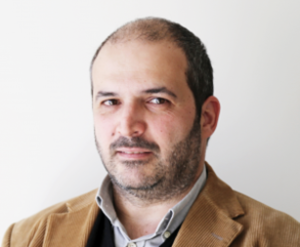 Talk Title: Solutions for Livestock Low Power Monitoring System
Talk Title: Solutions for Livestock Low Power Monitoring System
Abstract: Livestock identification is very important for farming automation. Livestock farmers need new monitoring and identification systems for their animals because of the increasing animal thefts, but also for food delivering automations and others. This system explore low-cost solutions with maximal energy autonomy and robustness.
Biography: Nuno Borges Carvalho (S’97–M’00–SM’05-F’15) was born in Luanda, Angola, in 1972. He received the Diploma and Doctoral degrees in electronics and telecommunications engineering from the University of Aveiro, Aveiro, Portugal, in 1995 and 2000, respectively.
He is currently a Full Professor and a Senior Research Scientist with the Institute of Telecommunications, University of Aveiro and an IEEE Fellow. He coauthored Intermodulation in Microwave and Wireless Circuits (Artech House, 2003), Microwave and Wireless Measurement Techniques (Cambridge University Press, 2013) and White Space Communication Technologies (Cambridge University Press, 2014). He has been a reviewer and author of over 200 papers in magazines and conferences. He is associate editor of the IEEE Transactions on Microwave Theory and Techniques, IEEE Microwave Magazine and Cambridge Wireless Power Transfer Journal.
He is the co-inventor of four patents. His main research interests include software-defined radio front ends, wireless power transmission, nonlinear distortion analysis in microwave/wireless circuits and systems, and measurement of nonlinear phenomena. He has recently been involved in the design of dedicated radios and systems for newly emerging wireless technologies.
Dr. Borges Carvalho was the co-chair of the IEEE MTT-20 Technical Committee and the past-chair of the IEEE Portuguese Section. He is also the chair of the URSI-Portugal Metrology Group. He was the recipient of the 1995University of Aveiro and the Portuguese Engineering Association Prize for the best 1995 student at the University of Aveiro, the 1998 Student Paper Competition (Third Place) of the IEEE Microwave Theory and Techniques Society (IEEE MTT-S) International Microwave Symposium (IMS), and the 2000 IEE Measurement Prize.
___________________________________
William R. Deal, Northrop Grumman Space Technology, Manhattan Beach, CA, USA
Talk Title: A 666 GHz Demonstration Crosslink with 9.5 Gbps Data Rate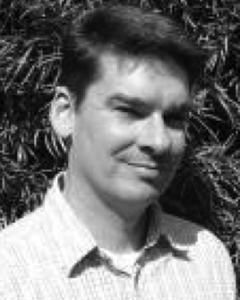
Abstract: This talk reports demonstration of a 0.666 THz (666 GHz) datalink. A peak error-free data rate of 9.5 Gbps is demonstrated over a 590 m range using QPSK modulation with a measured humidity of 18% with more than 40 dB SNR at the output of the receiver. The 0.666 THz link uses InP HEMT frequency converters providing both low noise and power amplification, a traveling wave tube Amplifier, and an advanced modem architecture. This ground-based demonstration indicates that traditional communications approaches can be used well into the submillimeter wave range. Moreover, a space-based crosslink based on this technology should be capable of transmitting Gbps-class data rates at LEO-LEO ranges.
Biography: William R. Deal (S’95–M’00–SM’06–F’17) received the B.S. degree in electrical engineering from the University of Virginia, Charlottesville, VA, USA, in 1996, and the M.S. and Ph.D. degrees from the University of California at Los Angeles, Los Angeles, CA, USA, in 1998 and 2000, respectively. He is currently a Department Staff Engineer with the RF Product and Mixed Signal Center, Northrop Grumman, Redondo Beach, CA, USA. He leads a variety of efforts related to developing submillimeter-wave technology. He has authored or coauthored more than 140 journal and conference articles and 5 book chapters. Dr. Deal was a recipient of the Outstanding Young Engineer Award in 2009 and the 2012 IEEE MWCL Best Paper Award.
___________________________________
Jasmin Grosinger, Assistant Professor at the Institute of Microwave and Photonic Engineering, Graz University of Technology, Graz, Austria
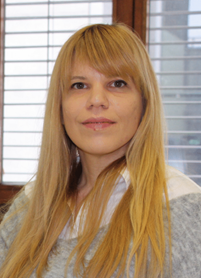 Talk Title: Ultra-Low Power Wireless Sensor Nodes for IoT
Talk Title: Ultra-Low Power Wireless Sensor Nodes for IoT
Abstract: In this talk, I will present radio frequency (RF) design solutions for wireless sensor nodes to solve sustainability issues on the Internet of things (IoT), which arise due to the massive deployment of wireless IoT nodes on environmental and economic levels. In general, one important design challenge is to create wireless IoT nodes that operate at ultra-low power to avoid the eco-toxicity of batteries and the prohibitive maintenance costs of battery replacement. Another important design challenge is to reach high levels of integration to limit the carbon footprint and costs associated with the production and end of life of these nodes. In particular, I will present RF design solutions on how to create battery less IoT nodes based on the ultra-high frequency (UHF) radio frequency identification (RFID) technology, which provide passive sensing capabilities and operate robustly in their respective application environment.
Biography: Jasmin Grosinger (S’09–M’12–SM’19) received the Dipl.-Ing. (M.Sc.) degree (Hons.) in telecommunications and Dr in Technology. (Ph.D.) degree (Hons.) from the Vienna University of Technology, Vienna, Austria, in 2008 and 2012, respectively. She received her “Vendia Docendi” in radio frequency (RF) and microwave engineering from the Graz University of Technology, Graz, Austria, in January 2021. In her postdoctoral thesis, she examines the RF design for ultra-low power wireless communication systems.
From 2008 to 2013, she was a Project Assistant with the Institute of Telecommunications, Vienna University of Technology, where she was involved in various projects dealing with radio frequency identification (RFID) technologies. In 2011, she was a Laboratory Associate with Disney Research, Pittsburgh, PA, USA, where she was involved in an RFID sensor project. Since 2013, she has been a Post-Doctoral Researcher with the Institute of Microwave and Photonic Engineering, Graz University of Technology, Graz, Austria, and is the Head of the RFID Technologies Research Group. Since 2017, she is an Assistant Professor at the Institute of Microwave and Photonic Engineering, focusing on ultra-low power RF components and systems. In 2018 and 2019, she has been a Guest Professor at the Institute of Electronics Engineering, Friedrich-Alexander-University Erlangen-Nuremberg, Erlangen, Germany.
She has authored more than 50 peer-reviewed publications and holds one U.S. patent. Prof. Grosinger is actively involved in Technical Program and Steering Committees of various RF-related conferences and is Associate Editor of the IEEE Microwave and Wireless Components Letters. She is a member of the IEEE Microwave Theory and Techniques Society (MTT-S), the European Microwave Association, and a member of the Union Radio-Scientifique Internationale Austria, Commission D. She also serves as a member of the IEEE MTT-S Technical Committees 25 and 26.
___________________________________
Ismail Guvenc, Professor North Carolina State University, USA
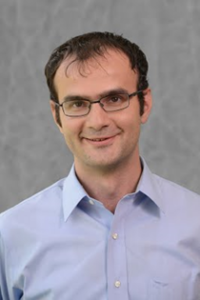 Talk Title: AERPAW: Aerial Experimentation and Research Platform for Advanced Wireless
Talk Title: AERPAW: Aerial Experimentation and Research Platform for Advanced Wireless
Abstract: In this talk, we will overview AERPAW: Aerial Experimentation and Research Platform for Advanced Wireless. AERPAW is one of the NSF PAWR projects funded by the National Science Foundation (along with POWDER and COSMOS) that aim to develop large-scale advanced-wireless experimentation platforms. A unique aspect of AERPAW will be to support emerging wireless and Internet of things (IoT) experimental research involving both aerial and ground mobile vehicles as well as fixed ground nodes. AERPAW users will have the opportunity to design and rapidly prototype next-generation wireless technology, systems, and applications in both emulated and real-world environments. This talk will review the overall scope and plans for the project, experimentation equipment that will be supported, deployment environments, and user interface. Use of AERPAW for IoT verticals and use cases such as smart-agriculture and smart-cities will also be discussed, along with some specific examples on types of experiments that are envisioned to be supported.
Biography: Ismail Guvenc (Fellow, IEEE) received his Ph.D. degree in electrical engineering from University of South Florida in 2006. He was with Mitsubishi Electric Research Labs during 2005, with DOCOMO Innovations between 2006-2012, and with Florida International University between 2012-2016. Since 2016, he has been an Associate Professor with the Department of Electrical and Computer Engineering at North Carolina State University. His recent research interests include 5G wireless systems, communications and networking with drones, and heterogeneous wireless networks. He has published more than 130 conference/journal papers and book chapters, and several standardization contributions. He co-authored/co-edited three books for Cambridge University Press, served as an editor for IEEE Communications Letters (2010-2015) and IEEE Wireless Communications Letters (2011-present), and as a guest editor for several other journals. Dr. Guvenc is an inventor/coinventor some 30 U.S. patents. He is a recipient of the FIU College of Engineering Faculty Research Award (2016), NSF CAREER Award (2015), Ralph E. Powe Junior Faculty Enhancement Award (2014), and USF Outstanding Dissertation Award (2006).
___________________________________
Robert W. Heath Jr., Distinguished Professor, North Carolina State University, Raleigh, North Carolina, USA
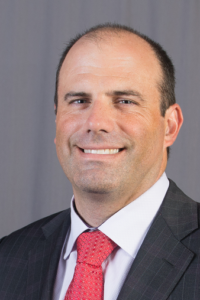 Talk Title: Millimeter Waves and Vehicle to Vehicle and Infrastructure Communications (V2X)
Talk Title: Millimeter Waves and Vehicle to Vehicle and Infrastructure Communications (V2X)
Abstract: Vehicles are becoming more intelligent and automated. High data rate connectivity seems critical to allow vehicles and road infrastructure exchanging all these sensor data to enlarge their sensing range and make better safety related decisions. Connectivity also enables other applications such as infotainment or high levels of traffic coordination. In this presentation, I will review the motivation and challenges associated with using mmWave for vehicle-to-vehicle and vehicle-to-infrastructure applications.
Biography: Robert W. Heath Jr. received the Ph.D. in EE from Stanford University. He is a Distinguished Professor at North Carolina State University. From 2002-2020 he was with The University of Texas at Austin, most recently as Cockrell Family Regents Chair in Engineering and Director of UT SAVES. He is also the President and CEO of MIMO Wireless Inc and Chief Innovation Officer at Kuma Signals LLC. Prof. Heath is a recipient of several awards including the 2012 Signal Processing Magazine Best Paper award, a 2013 Signal Processing Society best paper award, the 2014 EURASIP Journal on Advances in Signal Processing best paper award, and the 2014 Journal of Communications and Networks best paper award, the 2016 IEEE Communications Society Fred W. Ellersick Prize, the 2016 IEEE Communications Society and Information Theory Society Joint Paper Award, 2017 IEEE Marconi Prize Paper Award, the 2017 EURASIP Technical Achievement Award, the 2019 IEEE Communications Society Stephen O. Rice Prize, and the 2019 IEEE Kiyo Tomiyasu Award. He co-authored “Millimeter Wave Wireless Communications” (Prentice Hall in 2014) and “Foundations of MIMO Communications” (Cambridge 2019). He was EIC of IEEE Signal Processing Magazine from 2018-2020. He is a current member-at-large of the IEEE Communications Society Board-of-Governors (2020-2022) and a past member-at-large on the IEEE Signal Processing Society Board-of-Governors (2016-2018). He is a licensed Amateur Radio Operator, a registered Professional Engineer in Texas, a Private Pilot, a Fellow of the National Academy of Inventors, and a Fellow of the IEEE.
___________________________________
Janise McNair, Associate Professor, Department of Electrical and Computer Engineering, and Director of the Wireless and Mobile Systems Laboratory, University of Florida, Gainesville, Florida, USA
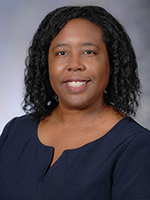 Talk Title: Securing the Insecure: Developing Software-Defined Network Frameworks for Securing Wireless Sensing IoT Applications
Talk Title: Securing the Insecure: Developing Software-Defined Network Frameworks for Securing Wireless Sensing IoT Applications
Abstract: The Internet of Things has been associated with a string of security breaches that threaten to limit its usefulness in implementation and widespread deployment. Advances in network management and security can be used to create an effective security framework but they must be reconfigured to support the limited capabilities of wireless sensor networks and the low-rate communications of IoT applications. This talk will overview the current and future security approaches for IoT and provide examples of successful frameworks. First, the IoT system network traffic comes from heterogeneous devices and network structures that experience different types of events, requiring more complex networking and control protocols. Managing these evolving networks using traditional network management schemes can increase the cost of network operation and maintenance and leave significant vulnerabilities in fault tolerance and cyber security. Next, the software defined networking (SDN) approach is presented as a viable solution for IoT network management due to its high scalability to improve the reliability of sensing and sharing within wireless sensor networks. In addition, SDNs help to assemble new services and infrastructure quickly to meet dynamically changing environment objectives. Finally, the software implementation of the SDN control plane and the built-in data collection mechanisms are demonstrated as excellent tools to implement Machine Learning (ML) network control applications for adaptive management of both network and data collection security.
Biography: Dr. Janise McNair is an Associate Professor of electrical & computer engineering (ECE) at the University of Florida. She is a researcher in the field of wireless sensing and Internet of Things applications. Currently, she is performing research on creating a framework for integrating IoT with 5G and 6G cellular systems, as well as building secure robust networked systems for IoT agriculture for food safety and availability; IoT construction for human health and safety, and smart grid communications for smart grid security. She was a pioneer in early next generation mobility management for cellular systems and later in the development of multi-discipline, cross-layer systems for smart grid security analysis. Dr. McNair earned her B.S. and M.S. degrees from the University of Texas at Austin and her Ph.D. degree in ECE from the Georgia Institute of Technology, with a research focus on medium access control and mobility management in next generation wireless networks. She is currently a member of the Intelligence, Science and Technology Experts Group of the National Academies of Sciences Engineering and Medicine and was a participant in the 2008 DARPA Computer Science Study Group. She currently serves on the steering committee of the IEEE Transactions on Mobile Computing and the Editorial Board of the Springer Wireless Networks Journal.
___________________________________
Tommaso Melodia, William Lincoln Smith Professor, Institute for the Wireless Internet of Things, Northeastern University, Boston MA, USA
Talk Title: Toward Autonomous, Software-Defined Networks of Wireless Drones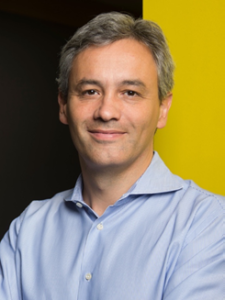
Abstract: Recent advances in drone technologies are making it possible for drones to transport goods, monitor disaster areas, and bring various forms of relief, connectivity, and assistance to areas that are otherwise difficult to access. This talk will cover our recent work on developing autonomous, programmable, and optimized wireless networks of unmanned aerial vehicles in a number of different scenarios. We will discuss applications of drones to augment cellular connectivity while carrying software-defined base stations, or to stream live video in cellular networks. We will then cover applications of
self-optimizing networks of drones in disaster and in tactical scenarios, and discuss open research challenges that need to be solved to enable true seamless and programmable connectivity for wireless networks of drones.
Biography: Tommaso Melodia is the William Lincoln Smith Professor with the Department of Electrical and Computer Engineering at Northeastern University in Boston. He is the Founding Director of the Institute for the Wireless Internet of Things and the Director of Research for the PAWR Project Office. He received his Laurea (integrated BS and MS) from the University of Rome – La Sapienza and his Ph.D. in Electrical and Computer Engineering from the Georgia Institute of Technology in 2007. He is an IEEE Fellow and recipient of the National Science Foundation CAREER award. Prof. Melodia is serving as Editor in Chief for Computer Networks, and has served as Associate Editor for IEEE Transactions on Wireless Communications, IEEE Transactions on Mobile Computing, IEEE Transactions on Multimedia, among others. He was the Technical Program Committee Chair for IEEE Infocom 2018, and General Chair for ACM MobiHoc 2020, IEEE SECON 2019,
ACM Nanocom 2019, and ACM WUWNet 2014. Prof. Melodia’s research on modeling, optimization, and experimental evaluation of
Internet-of-Things and wireless networked systems has been funded by the US National Science Foundation, several industrial partners, the
Air Force Research Laboratory the Office of Naval Research, DARPA, and the Army Research Laboratory.
___________________________________
Paolo Mezzanotte, Associate Professor, University of Perugia, Perugia, Italy
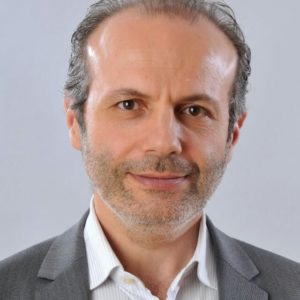 Talk Title: Recent Advances and Future Directions in Industrial IoT
Talk Title: Recent Advances and Future Directions in Industrial IoT
Abstract: The development of Internet of Things (IoT) is changing the way we interact with the everyday objects, that can be connected to the internet without the human intervention. This new technological paradigm impacts not only on our lifestyle, but also on the organization of the industrial production (Industrial IoT). However, consumer IoT and Industrial IoT may have to provide different services characterized by different challenges. While consumer IoT is oriented to Human needs, IIoT is aimed at providing machine to machine (M2M) communication for inventory, decision making and process optimization purposes.
In this presentation, we will describe the most recent advances in Industrial IoT focusing on the main solutions developed by our research group at the University of Perugia. After an overview about recent consumer IoT and Industrial IoT solutions, which will be compared in terms of connectivity, energy efficiency and real-time performance, we will outline the main challenges and opportunities for future IoT devices. Finally, we will propose some wireless IoT sensors for different industrial applications, purposely designed to address the afore described challenges.
Biography: Paolo Mezzanotte (M’12) was born in Perugia, Italy, in 1965. He received the Ph.D. degree from the University of Perugia, Perugia, in 1997. Since 2007, he has been an Associate Professor with the University of Perugia, where he has been involved in teaching the classes “Radio-frequencies Engineering” and “Systems and Circuits for IoT”. His Current research interests include the development of microwave circuits on bio-compatible substrates and the enabling technologies for IoT. These research activities are testified by over 170 publications in the most important specialized journals and at the main conferences of the microwave scientific community. Dr. Mezzanotte, from January 2017 to December 2019, was the Chair of the IEEE Technical Committee MTT-24- RFID Technologies. From 2014 to 2019, he was the Vice Head of the Department of Engineering of the University of Perugia. He is topic editor (RFID, Wireless Sensors and IoT) of IEEE Journal of Microwaves, and associate editor of ACES journal. His present h-index is 22.
___________________________________
Sanjay P Samuel, Corridor Design Manager- Downtown Redmond Link Extension and BRT at Sound Transit, Seattle WA, USA
Talk Title: IoT/AI in Railroads and Digital Twin of Trains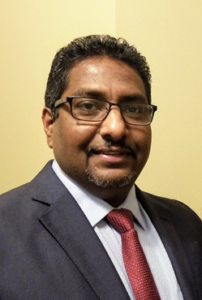
Abstract: The railroad development is expected to rely upon smart transportation systems based on IoT/AI and that leverage technologies over a large rail network infrastructure to reduce its life-cycle cost. New services, such as integrated security, asset management, and predictive maintenance, are expected to improve timely decision-making for issues like safety, scheduling, and system capacity by using Digital Twin of trains. The Rail Road’s represent a combination of interconnected technological solutions and components, as well as modern transportation infrastructure like Positive Train Control, Communication Based Train Control Systems automatic ticketing systems, passenger information systems.
During this presentation we will discuss, where are we today with our technology IoT and Artificial Intelligence in Railroad. IoT to monitor and control the electronics, heating, pneumatics, and power. How to design, maintain and retire these multimillion-dollar infrastructure units including railroad tracks, locomotives, and rail cars. Prevent catastrophic train derailments with monitoring controlling devices. The process involved in developing a digital twin and tracking its aging throughout its lifetime including heat, electrical and structural stresses. Provide accurate times on when a unit will fail for future funding decisions.
Biography: Mr. Samuel is a decisive technical leader with more than 27 years of experience in leading and developing high performing systems engineering teams. Domain expertise in railroad, positive train control, Communications based train controls, bus rapid transits, RF Communications and technical infrastructure projects. He is experienced in leading engineering teams for implementation of IoT and AI in railroads. He was involved in the development of PTC, CBTC and digital twin for train software and hardware development.
He has delivered projects in Asia, Australia, Europe, and America for passenger trains, freight trains, light rails, bus rapid transits, cellular and radio communications in different parts of the world. He has Diploma in Electronics and Communications Engineering from Bangalore India and BSEE from Drexel University, Philadelphia, Graduate certificate in Systems Engineering from Florida Institute of Technology, Melbourne Florida and currently MBA candidate. He is a multilinguist and can speak 8 languages.
___________________________________
Susana Sargento, Full Professor, University of Aveiro and senior researcher in the Institute of Telecommunications, Aveiro, Portugal
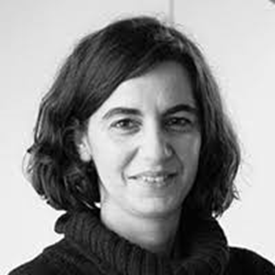 Talk Title: Open Lab for 5G-IoT and beyond services
Talk Title: Open Lab for 5G-IoT and beyond services
Abstract: Smart cities hold some of the planet’s most awe-worthy demonstrations of the IoT’s potential; in this talk, we will share Aveiro Steam City project’s experience and shed light on the smart city applications through IoT-enabled smart city use cases that span multiple areas: from contributing to a healthier environment and improving traffic and intelligent transportation systems to enhancing public safety and controlling air and noise pollution.
In this talk, we will describe the Aveiro’s Tech City Living Lab that provides a city-scale digital open laboratory, that aims at attracting researchers, digital industries, entrepreneurs and other national/international stakeholders to Aveiro, to develop and test their products or services. The access infrastructure is based on last generation fiber link technology, reconfigurable radio units and 5G network services, in 44 strategic places covering the urban area of Aveiro. Moreover, vehicular communication and sensors equipment are installed in buses and garbage collection vehicles, which currently record mobility and environmental data, making a complete live map of these parameters in the city, and providing all the data for traffic monitoring and safe driving systems. The Digital Urban Platform allows to gather, analyse and share information collected from multiple sources (e.g., machines/sensors, databases), providing analytic and predictive services for IoT applications and city verticals.
Biography: Susana Sargento is a Full Professor in the University of Aveiro and a senior researcher in the Institute of Telecommunications, where she is leading the Network Architectures and Protocols group. She was a visiting PhD student in Rice University (2000-2001), and a Guest Faculty in Carnegie Mellon University (2008).
Susana has been leading research projects with telecom operators and OEMs. She has organized several international conferences and workshops, such as ACM MobiCom, IEEE Globecom, and has also been a reviewer of conferences and journals, such as IEEE Networks, IEEE Communications. Susana has co-founded a vehicular networking company, Veniam (www.veniam.com), she is the winner of the 2016 EU Prize for Women Innovators. She is also the co-coordinator of the national initiative of digital competences in the research axis INCoDe.2030, belongs to the evaluation committee of the Fundo200M (www.200m.pt), and she is one of the Scientific Directors of CMU-Portugal Programme. Her main research interests are in the areas of self-organized networks, in ad-hoc and vehicular network mechanisms and protocols, such as routing, mobility, security and delay-tolerant mechanisms, resource management, and content distribution networks. She regularly acts as an Expert for European Research Programs.
___________________________________
Emmanouil M. Tentzeris, Professor Georgia Institute of Technology, Atlanta, Georgia, USA
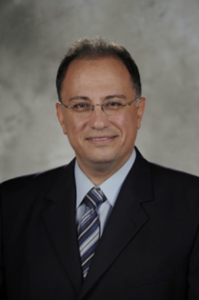 Talk Title: Inkjet-/3D-/4D-Printed “Zero-Power” Flexible Wireless Ultrabroadband Modules for IoT, SmartAg and Smart Cities Applications
Talk Title: Inkjet-/3D-/4D-Printed “Zero-Power” Flexible Wireless Ultrabroadband Modules for IoT, SmartAg and Smart Cities Applications
Abstract: In this talk, inkjet-/3D-printed antennas, interconnects, “smart” encapsulation and packages, RF electronics, microfluidics and sensors fabricated on glass, PET, paper and other flexible substrates are introduced as a system-level solution for ultra-low-cost mass production of Millimeter-Wave Modules for Communication, Energy Harvesting and Sensing applications. Prof. Tentzeris will touch up the state-of-the-art area of fully integrated printable broadband wireless modules covering characterization of 3D printed materials up to E-band, novel printable “ramp” interconnects and cavities for IC embedding as well as printable structures for self-diagnostic and anti-counterfeiting packages. The presented approach could potentially set the foundation for the truly convergent wireless sensor ad-hoc networks of the future with enhanced cognitive intelligence and “rugged” packaging. Prof. Tentzeris will discuss issues concerning the power sources of “near-perpetual” RF modules, including flexible miniaturized batteries as well as power-scavenging approaches involving thermal, EM, vibration and solar energy forms. The final step of the presentation will involve examples from shape-changing 4D-printed (origami) packages, reflect arrays and mmW wearable (e.g., biomonitoring) antennas and RF modules. Special attention will be paid on the integration of ultrabroadband (Gb/sec) inkjet-printed nanotechnology-based backscattering communication modules as well as miniaturized printable wireless (e.g.CNT) sensors for Internet of Things (IoT), 5G and smart agriculture/biomonitoring applications. It has to be noted that the talk will review and present challenges for inkjet-printed organic active and nonlinear devices as well as future directions in the area of environmentally friendly (“green”) RF electronics and “smart-skin’ conformal sensors.
Biography: Professor Tentzeris was born and grew up in Piraeus, Greece. He graduated from Ionidios Model School of Piraeus in 1987 and he received the Diploma degree in Electrical Engineering and Computer Science (Magna Cum Laude) from the National Technical University in Athens, Greece, in 1992 and the M.S. and Ph.D. degrees in Electrical Engineering and Computer Science from the University of Michigan, Ann Arbor in 1993 and 1998.
He is currently a Ken Byers Professor in the area of flexible electronics with the School of ECE, Georgia Tech and he has published more than 600 papers in refereed Journals and Conference Proceedings, 5 books and 25 book chapters. He has served as the Head of the Electromagnetics Technical Interest Group of the School of ECE, Georgia Tech. Also, he has served as the Georgia Electronic Design Center Associate Director for RFID/Sensors research from 2006-2010 and as the GT-Packaging Research Center (NSF-ERC) Associate Director for RF research and the leader of the RF/Wireless Packaging Alliance from 2003-2006. Also, Dr. Tentzeris is the Head of the A.T.H.E.N.A. Research Group (20 students and researchers) and has established academic programs in 3D Printed RF electronics and modules, flexible electronics, origami and morphing electromagnetics, Highly Integrated/Multilayer Packaging for RF and Wireless Applications using ceramic and organic flexible materials, paper-based RFIDs and sensors, inkjet-printed electronics, nanostructures for RF, wireless sensors, power scavenging and wireless power transfer, Microwave MEM’s, SOP-integrated (UWB, multiband, conformal) antennas and Adaptive Numerical Electromagnetics (FDTD, Multi-Resolution Algorithms). He was the 1999 Technical Program Co-Chair of the 54th ARFTG Conference and he is currently a member of the technical program committees of IEEE-IMS, IEEE-AP and IEEE-ECTC Symposia. He was the TPC Chair for the IMS 2008 Conference and the Co-Chair of the ACES 2009 Symposium. He was the General Co-Chair of the 2019 IEEE APS Symposium in Atlanta and the Chairman for the 2005 IEEE CEM-TD Workshop. He was the Chair of IEEE-CPMT TC16 (RF Subcommittee) and he was the Chair of IEEE MTT/AP Atlanta Sections for 2003. He is a Fellow of IEEE, a member of MTT-15 Committee, an Associate Member of European Microwave Association (EuMA), a Fellow of the Electromagnetics Academy, and a member of Commission D, URSI and of the Technical Chamber of Greece. He is the Founder and Chair of the newly formed IEEE MTT-S TC-24 (RFID Technologies). He is one of the IEEE Council on RFID Distinguished Lecturers and he has served as one IEEE MTT-Distinguished Microwave Lecturers (DML) from 2010-2012. His hobbies include basketball, swimming, ping-pong and travel.
___________________________________
Fabio Tosti, Associate Professor, University of West London, London, UK
Talk Title: Emerging Applications of Ground-based and Satellite Remote Sensing Technologies in Civil and Environmental Engineering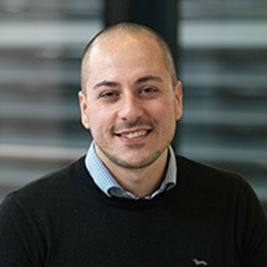
Abstract: This talk reviews recent applications of ground-based and satellite remote sensing technologies in civil and environmental engineering. An overview of the current experimental and theoretical developments of the Ground Penetrating Radar (GPR) technique in pavement infrastructure (roadways and railways) and forestry engineering is presented. In addition, the talk covers latest applications of the Multi-temporal Synthetic Aperture Radar Interferometry (InSAR) in the health monitoring and assessment of transport infrastructures and bridges, with a focus on the integration with complementary non-destructive testing (NDT) methods.
Biography: Fabio Tosti (M’17–SM’19) received the MSc Engineering degree cum laude in Infrastructure and Transportation Engineering from Roma Tre University, Italy, in 2010, where he also received the PhD degree in Civil Engineering (excellent rating), in 2014. He is currently an Associate Professor in Civil Engineering and the Deputy Head of The Faringdon Centre – The Non-destructive Testing Centre, at the University of West London, London, UK.
Dr Tosti’s research interests include the development of new algorithms, methodologies and numerical models for engineering and geoscience applications and the non-destructive assessment, repair and maintenance of civil engineering infrastructures. He has over 170 research publication records in international journals, conferences and books, and has served as Managing Guest Editor in numerous international journals such as Construction and Building Materials, NDT&E International, Near Surface Geophysics, Remote Sensing, Sensors and Surveys in Geophysics. He is a member of the editorial board of Remote Sensing and Frontiers in Remote Sensing, and the Associate Editor of the International Journal of Pavement Engineering (IJPE), Geoscientific Instrumentation, Methods and Data Systems (GI) and the Journal of Railway Engineering.
He served as Organizer, Panel Member (Scientific), and Session Chair in several international conferences and held a supervisory role at the international project European Cooperation in Science and Technology TU1208 Action, titled “Civil Engineering Applications of Ground Penetrating Radar”. He was the General Co-Chair of the 2nd International Workshop on Signal Processing Techniques for Ground Penetrating Radar Applications (SPT4GPRA 2020), co-located with the 2020 43rd International Conference on Telecommunications and Signal Processing (TSP – IEEE Conference Record #49548). In 2017 Dr Tosti was granted an Early Career Scientist Award by the European Geosciences Union (EGU) for his outstanding contribution to the development of new GPR methodologies in geosciences and civil engineering. Additionally, he holds the post of Convener at the EGU General Assembly for sessions on NDT methods and data fusion.
___________________________________
Mehmet Can Vuran, Susan J Rosowski Professor, Computer Science and Engineering, University of Nebraska, Lincoln, NE, USA
Talk Title: Agricultural and Underground Communications and Sensing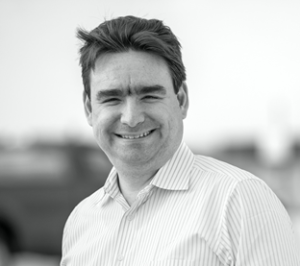
Abstract: The projected increases in World population and need for food have recently motivated adoption of information technology solutions in crop fields and ranches for precision agriculture approaches. The recent developments in low-power wireless communications, sensing technology, and rural networking allow sensing components to be deployed in places where no computer has gone before. Agricultural Internet of Things (Ag-IoT) emerges from this synergy as a prominent candidate to address food production challenges. In this talk, a broad overview of issues in IoT business, technology, and use cases will be provided followed by a specific discussion on Ag-IoT solutions. Moreover, recent developments in wireless communication in confined environments will be discussed within the context of Internet of Underground Things, which is an emerging type of network, where sensors are buried in the ground and communicate through soil, with applications in precision agriculture, environmental monitoring, and infrastructure monitoring. Finally, future challenges for Agricultural Internet of Things (Ag-IoT) will be discussed.
Biography: Mehmet Can (Jon) Vuran received his B.Sc. degree in Electrical and Electronics Engineering from Bilkent University, Ankara, Turkey in 2002. He received his M.S. and Ph.D. degrees in Electrical and Computer Engineering from Georgia Institute of Technology in 2004 and 2007, respectively.
Currently, he is the Susan J. Rosowski Professor of Computer Science and Engineering at the University of Nebraska-Lincoln. Dr. Vuran received an NSF CAREER award in 2010 for “Bringing Wireless Sensor Networks Underground” and he was named a “highly-cited researcher in Computer Science” three years in a row by Thomson Reuters. He is the co-author of Wireless Sensor Networks textbook, TPC Co-Chair of IEEE INFOCOM 2020, and an editor in IEEE Transactions on Wireless Communications, IEEE Transactions on Mobile Computing, and IEEE Communications Surveys and Tutorials Journal. His current research interests include 6G Internet of Things, underground communications, cognitive radio networks, and cyber-physical networks.
___________________________________
Tao Zhang, Emerging Network Technologies Group, NIST, Gaithersburg, MD, USA
Talk Title: Sensor Data for Vehicle Teleoperation
Abstract: Vehicle teleoperation has been gaining momentum in the industry over the past few years. Today, vehicle teleoperation relies fully on human teleoperators. Future teleoperation systems, powered by artificial intelligence and advanced networks, can potentially allow some automated driving intelligence to be off-loaded from the vehicle into the cloud. Over time, the growing level of teleoperation automation can enable new automated driving solutions that are not feasible today. In this talk, I will discuss issues related to sensor data for vehicle teleoperation.
Biography: For over 30 years, Dr. Tao Zhang, an IEEE Fellow, has been leading research, product development, and corporate strategies to create disruptive innovations and transform them into practical solutions, standards, and products. He is currently managing the Emerging Networking Technologies Group in the Information Technology Lab at the US National Institute of Standards and Technology (NIST). He was the CTO / Chief Scientist for the Smart Connected Vehicles Business at Cisco Systems, and the Chief Scientist and the Director of multiple R&D groups working on wireless and vehicular networking at Telcordia Technologies (formerly Bellcore). He cofounded the Open Fog Consortium and the Connected Vehicle Trade Association (CVTA) and served as a founding Board Director for them. Tao holds 50+ US patents and coauthored two books “Vehicle Safety Communications: Protocols, Security, and Privacy” and “IP-Based Next Generation Wireless Networks”, and 80+ peer-reviewed papers. He served as the CIO and a Board Governor of the IEEE Communications Society and as a Distinguished Lecturer of the IEEE Vehicular Technology Society. He cofounded and served on leadership roles for multiple international conferences and forums.
___________________________________
Jenny Zhen Yu, Associate Professor, California State Polytechnic University, Pomona, California, USA
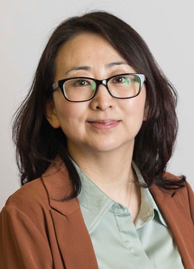 Talk Title: High-Endurance UAV Via Parasitic Weight Minimization and Wireless Energy Harvesting
Talk Title: High-Endurance UAV Via Parasitic Weight Minimization and Wireless Energy Harvesting
Abstract: This work discusses the on-going investigation of novel technologies for increasing the endurance of UAVs, mainly by increasing power-to-weight ratio through parasitic weight reduction of structural and power systems and generating/harvesting energy mid-flight. Electrically powered UAVs are typically limited in range and mission time due to the limited capacity of existing technologies. The benefit of increased endurance is the ability to provide virtually nonstop surveillance over an area, which has both commercial and military applications. The student engineering team at the California State Polytechnic University, Pomona have been working on this multi-year, multidisciplinary project to integrate a variety of technologies into an existing RC aircraft. Flexible solar panels that double as wing skin, vibrational kinetic energy generators, in-flight induction wireless recharging and thermoelectric generators are the four main methods of generating power during flight. To store the power, the wing spars double as the main batteries and structural supercapacitors could replace the lower wing skin. These storage devices reduce parasitic weight by doubling as aircraft structural components, therefore forming a “flying battery”. An intelligent power management system was developed to accept the AC and DC power sources and maximize re-charge rate by alternating which battery is charged at a given time.
Biography: Dr. Jenny Zhen Yu received her Ph.D. from University of California, Irvine (with Prof. Peter Burke). In 2006 she became a Lead Nanofabrication Engineer at RF Nano Corporation. She joined the faculty at the Department of Electrical & Computer Engineering, California State Polytechnic University, Pomona as an Assistant Professor in 2014, and then she was promoted to Associate Professor in 2020. She has expertise in the areas of Nanotechnology with application in nanomaterial synthesis, electronics devices fabrication and characterization, low-power, low-cost wireless microelectronic mechanical system (MEMS) sensor network; electronic devices featuring wireless communication. Her research has resulted in patent applications, peer-reviewed journal papers and book chapters. Her recent recognitions include promotion to rank of IEEE Senior Member (2016), CSU ARI grant (2016), NASA CPP Startup (2017, 2018), and CPP Provost Teacher-Scholar Scholarship and the Grant Writing Award (2019-20). She served as a guest editor for the International Journal of Nanomaterials. She is also active in her professional societies. She has served as the Journal/ Conference paper reviewer, Grant proposal reviewer, Chair of the Conference Symposium, Chair of the Electron Devices, Circuit and System (EDCAS) Chapter, Chair of Women in Engineering (WIE) and Chair of the Nanotechnology Council Chapter in IEEE Foothill Section.
___________________________________
Speaker: Martin Zoltick, Attorney, Rothwell, Figg, Ernst & Manbeck, P.C., Washington DC, USA
 Talk Title: Feeling Insecure? What the IoT Community Needs to Know to Navigate the Evolving Legal and Regulatory Landscape Requiring “Reasonable Security” Features for IoT and Connected Devices.
Talk Title: Feeling Insecure? What the IoT Community Needs to Know to Navigate the Evolving Legal and Regulatory Landscape Requiring “Reasonable Security” Features for IoT and Connected Devices.
Abstract: Just think about all of those connected devices that you have on you right now, in your office, at your home, and add to that all of the connected devices used in industry, such as in manufacturing plants, in server farms, for utilities… the list goes on. Industry estimates put the number of deployed IoT devices worldwide at 30 billion right now, with more than 75 billion connected to the web by 2025. It should be no surprise that lawmakers and regulators, and the public at large, have taken notice. This session, presented by Marty Zoltick, will provide an overview of the legal and regulatory framework surrounding IoT and connected devices, including newly enacted laws in the US requiring manufacturers of connected devices to equip those devices with “reasonable security features,” as well as similar requirements under consideration in the EU, UK, and other jurisdictions. The presentation concludes with guidance on best practices, steps to build a compliance program, and a framework for risk management.
Biography: Martin M. Zoltick is a technology lawyer with more than 30 years of experience representing inventors, innovators, entrepreneurs, and investors. Marty has a degree in computer science and, prior to attending law school, he worked for several years as a software developer and engineer. His formal training in computer science and technical experience as a practicing software developer and engineer has enabled him to handle complex software-related legal matters successfully in a cost-effective and efficient manner.
Marty’s practice is focused primarily on intellectual property (IP) matters, transactions, and privacy, data protection, and cybersecurity. He is a registered patent attorney, and a substantial part of his practice involves drafting and prosecuting patent applications and, along with that, developing with his clients IP strategic plans designed to maximize value and satisfy both legal and business objectives. Marty also has significant experience handling contested cases and disputes on behalf of his clients. He regularly serves as trial counsel in major patent disputes in the U.S. federal district courts and as lead counsel in post-grant proceedings before the U.S. Patent and Trademark Office Patent Trial and Appeal Board.
A Certified Information Privacy Professional in the United States (CIPP/US), he also helps clients understand and navigate the rapidly evolving area of privacy and data protection law. He is working with clients to prepare, integrate, and implement best practices for CCPA, other state’s laws, and GDPR compliance. With his technical background and expertise, he is uniquely positioned to work with IT and technical teams to understand potential exposure and minimize the risks of a breach. Marty is currently providing thought leadership on the application of data protection laws and industry/technology-specific data privacy and security considerations for IoT devices, biometric data, and in outer space.
Marty is a competitive Masters swimmer and regularly competes in U.S. Masters Swimming Meets, as well as competing in open water swims in the U.S. and abroad.
___________________________________


